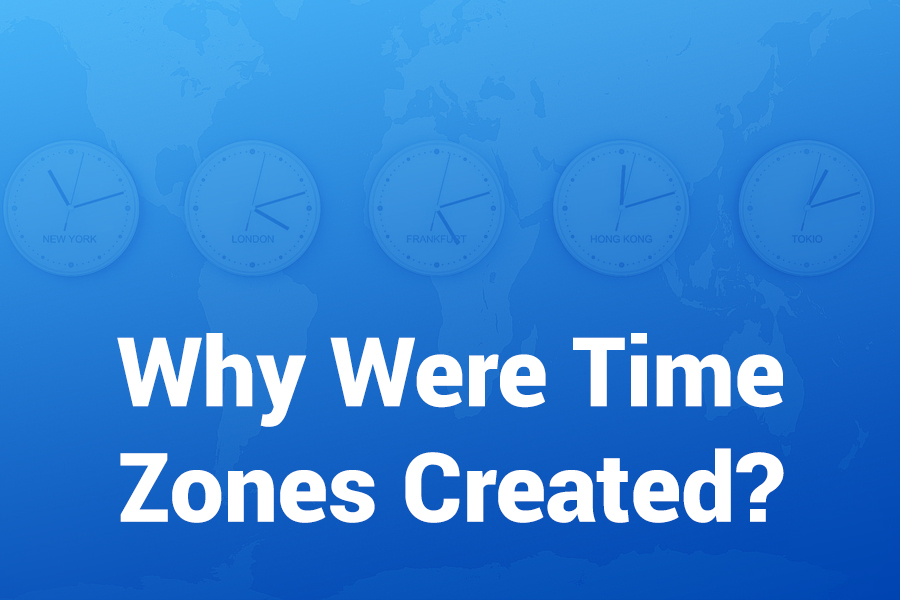The world once ran on local solar time: each town set its clock by the sun, and “noon” varied from place to place. But during the 19th century, rapid advances in transportation, communication, and commerce exposed the flaws of this system.
Confusion reigned over train schedules, telegraph signals, and global coordination. To resolve the chaos, the concept of standardized time zones emerged.
In this article I explain how and why time zones came about, trace the key inventions and proposals, explore their adoption in practice, and show how their design still affects our world today.
The Problem of Local Solar Time
For centuries before standard timekeeping, communities measured time by the sun: when it reached its highest point in the sky, people considered it “noon.” That worked well for local life, but as societies expanded, it broke down.
In the United States in the mid-1800s, more than 144 different local times existed across towns and cities. Travelers crossing only a few dozen miles would need to reset watches repeatedly. Misalignments of minutes could mean missed trains or communication errors.
Railroads felt the pain first. Coordinating schedules across dozens of local times became a logistical nightmare. Engineers and planners realized that only a uniform reference could reliably manage this complexity.
Railroads Lead the Way
Railroads had a practical incentive to standardize time. In 1840, Britain’s Great Western Railway began using Greenwich Mean Time (GMT) by portable chronometers instead of local time. That first move toward uniformity spread to other railroad lines.
In North America, railroad companies pushed harder. On November 18, 1883, U.S. and Canadian railroads adopted a system dividing the continent into four major time zones—Eastern, Central, Mountain, and Pacific. At exactly noon in each zone, clocks would be reset to the new standard. The “Day of Two Noons” marked when various local solar times gave way to coordinated schedules across vast distances.
Within months, many cities followed suit, aligning their public clocks with railroad time rather than local solar time. The advantage was clear: timetables became consistent, and travel safer and more efficient.
The Theoretical Foundation: Fleming’s Vision
While railroads solved a domestic problem, the idea of worldwide time zones needed a visionary thinker. Canadian engineer Sir Sandford Fleming proposed in 1876–1878 a global scheme: divide the world into 24 time zones, each 15 degrees of longitude apart, with each zone set one hour apart. He also championed a universal “cosmopolitan time” for science and telegraphy.
Fleming’s proposal gained traction at the 1884 International Meridian Conference in Washington, D.C., which established the prime meridian at Greenwich and encouraged adoption of time zones globally. Though no nation adopted Fleming’s system wholesale that day, his ideas became a guiding framework for coordinated timekeeping.
Legal Standardization in the United States
The railroad-driven system held sway into the early 20th century. But to systematize it formally, the U.S. Congress passed the Standard Time Act in March 1918. That act defined five time zones (Eastern, Central, Mountain, Pacific, and Alaska) and gave the Interstate Commerce Commission the authority to set boundaries.
Also in that act, daylight saving time (DST) first appeared in U.S. law as a wartime energy-saving measure. Though DST was later repealed and reintroduced, the act cemented federal authority over time regulation nationwide.
In 1966, the Uniform Time Act standardized the dates for DST transitions, reducing local chaos. The Department of Transportation now oversees time zone boundaries and daylight time regulation—ensuring a uniform standard across all states.
Why Standard Time Zones Matter
Time zones are more than abstract constructs. They serve critical roles in modern life:
- Transportation and travel — Airlines, railways, buses, and shipping rely on predictable schedules.
• Communication and commerce — Global markets, conference calls, and remote work need synchronized time references.
• Science and technology — Astronomy, satellite operations, and navigation use Coordinated Universal Time (UTC) as a foundation.
• Daily social life — Local zones coordinate sunrise, work hours, school, and holidays consistently.
Without a shared frame of reference, the world would revert to confusion: crossing a few miles might require manual clock adjustments, and global coordination would stall.
Challenges and Exceptions
The ideal 15-degree zones often bend to human, political, or economic realities. Some regions adopt half-hour or quarter-hour offsets—India (UTC+5:30), Nepal (UTC+5:45), and parts of Australia do this to align social life to daylight patterns.
Larger countries sometimes use a single time zone for unity, even if geography suggests more. China, despite its width, maintains one zone (UTC+8) across the whole country. Spain and Argentina use time zones that don’t perfectly align with their longitude to match regional economic ties.
Some proposals even suggest discarding time zones entirely—using UTC everywhere—but such radical change encounters resistance due to disruption to local daily rhythms.
Modern Evolution and Trends
Since widespread adoption by 1929, nearly every inhabited place uses a time zone based on an offset from UTC. But changes still occur: time zone boundaries shift, daylight saving policies evolve, and debates about clock changes continue.
Around 34 percent of the world’s countries still observe DST. In the U.S., most states except Hawaii and much of Arizona follow daylight saving. Some states periodically propose making DST permanent.
Technological systems store and compute time in UTC internally, converting to local time only for display. This ensures consistency across devices and time zones.
Researchers continue studying health and energy impacts of DST. Some argue the original energy-saving rationale may no longer apply in modern societies.
Conclusion
Time zones emerged out of necessity, not theory. A world built on local solar time couldn’t survive rapid travel, telegraph, and commerce. Railroads first forced the change; visionaries like Fleming shaped it into a global system.
Legislation turned practical arrangements into lasting standards. Today, time zones underpin travel, business, science, and social life. Although the system isn’t perfect, it remains an essential framework for coordinating a complex, interconnected world.
